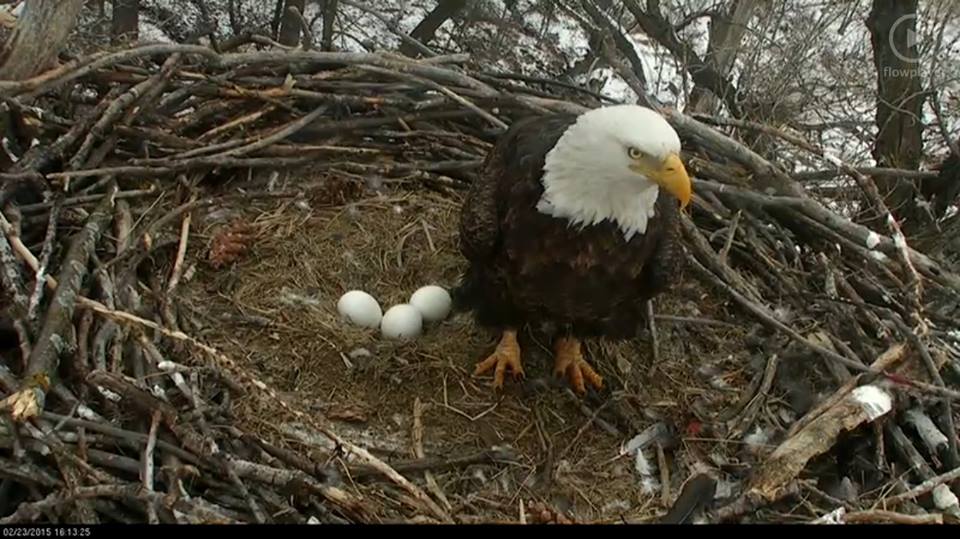The Eaglet has Pipped
I wanted to say, “The eagle has landed.” but that would not have been true. The eaglet has pipped is true and by now it may have even hatched. This is a super cool project you should check out, their Facebook Feed has some amazing photos like the one below.
Eagle eggs are hatching!
By now most followers have probably heard that the first eaglet pipped yesterday, Feb. 24 – right on schedule! The adults laid their eggs about a month earlier than last year, and experienced many days of subzero temperatures. Despite this, the adults have done an excellent job keeping the eggs warm, and it appears to be paying off. If you missed the pipping yesterday, several great photos and videos were captured that can be viewed on our Minnesota Nongame Wildlife Program Facebook Page (you DO NOT need a Facebook account to view these images).
The main EagleCam feed can be viewed at: mndnr.gov/eaglecam We also have a mobile website for users who prefer to watch via smartphones and tablets: http://www.webcams.dnr.state.mn.us/eagle/mobile.html
More Q & A
Q: What does “pip” mean?
A: Pip is the term used to describe the first crack and hole in the egg created by the eaglet as it tries to hatch. After pipping, an eaglet may remain in the egg for a day or two before emerging completely.
Q: How do eaglets know when to hatch?
A: Just like chicken eggs, eagle eggs have yolk that feed the developing embryo. The egg contains just enough nutrients to allow the embryo to develop into a young eaglet that is strong enough to escape the egg, survive a few days outside the egg without feeding, and take solid food from the parents. Do not be concerned if you do not see a recently emerged eaglet being fed right away.
Q: Is it too cold for the eaglets?
A: Minnesota’s wildlife are tough critters and are adapted to survive Minnesota’s frigid cold and sweltering heat. There are many challenges ahead for these eaglets, including extreme weather, but these adults have shown complete dedication to their offspring.
Q: I saw a dead bird in the nest, did one of the eaglets die already?
A: We have no reason to think the first eaglet has perished. The adults have brought a couple pigeons into the nest, including one that is within the nest bowl, and we suspect people are mistaking these prey items for the eaglet.
Q: Is DNR planning to name the eagles?
A: Because these eagles are wild animals and because the Nongame Wildlife Program is a scientific agency, we want to focus on observing natural behavior, and avoid emotional attachment to these wild animals. Therefore, we do not feel it is appropriate to give them names.
Q: Do all eagles that hatch survive to fledging?
A: Estimates of fledging success vary for a wide variety of reasons, but in general nests experience some eaglet mortality before fledging.
Q: How can I help eagles?
A: There are many ways to help eagles in Minnesota and beyond. Donating to the Minnesota Nongame Wildlife Program is one way. Also using and encouraging others to switch to non-lead ammunition and fishing tackle.


Leave a Reply
You must be logged in to post a comment.